I had moved back to Chicago to do my MFA degree at the Art Institute of Chicago and my thesis was going be about Wrigley Field as the only daylight baseball park left in the Major Leagues and the uniqueness of its crazy committed fans base that had spanned generations. It was a place that I grew up going to as a kid and throughout my teen years until I left to go to college in the ‘70’s. I was one of those fans. I knew this story. I was this story. I wrote to the Wrigley’s and the Cubs organization asking for access to spend a year doing the photo essay and was thrilled when one I got the OK and was given a season’s credential and access to Wrigley on non-game days to photograph the ballpark. I returned just after the strike ended in August of 1981 and started photographing and wandering around the ballpark. After the season ended, I used those photos and applied for a grant from the Illinois Arts Council to document Wrigley with the Cubs endorsement. I was thrilled when the grant was approved and on the strength of that I ended up not going to the Art Institute and just worked on the photo essay during the day and worked waiting tables at night. I could not have dreamed that I would be hired by the team at the end of the 1982 season and would spend the next 40 years covering the Chicago Cubs, Wrigley Field and so much more.
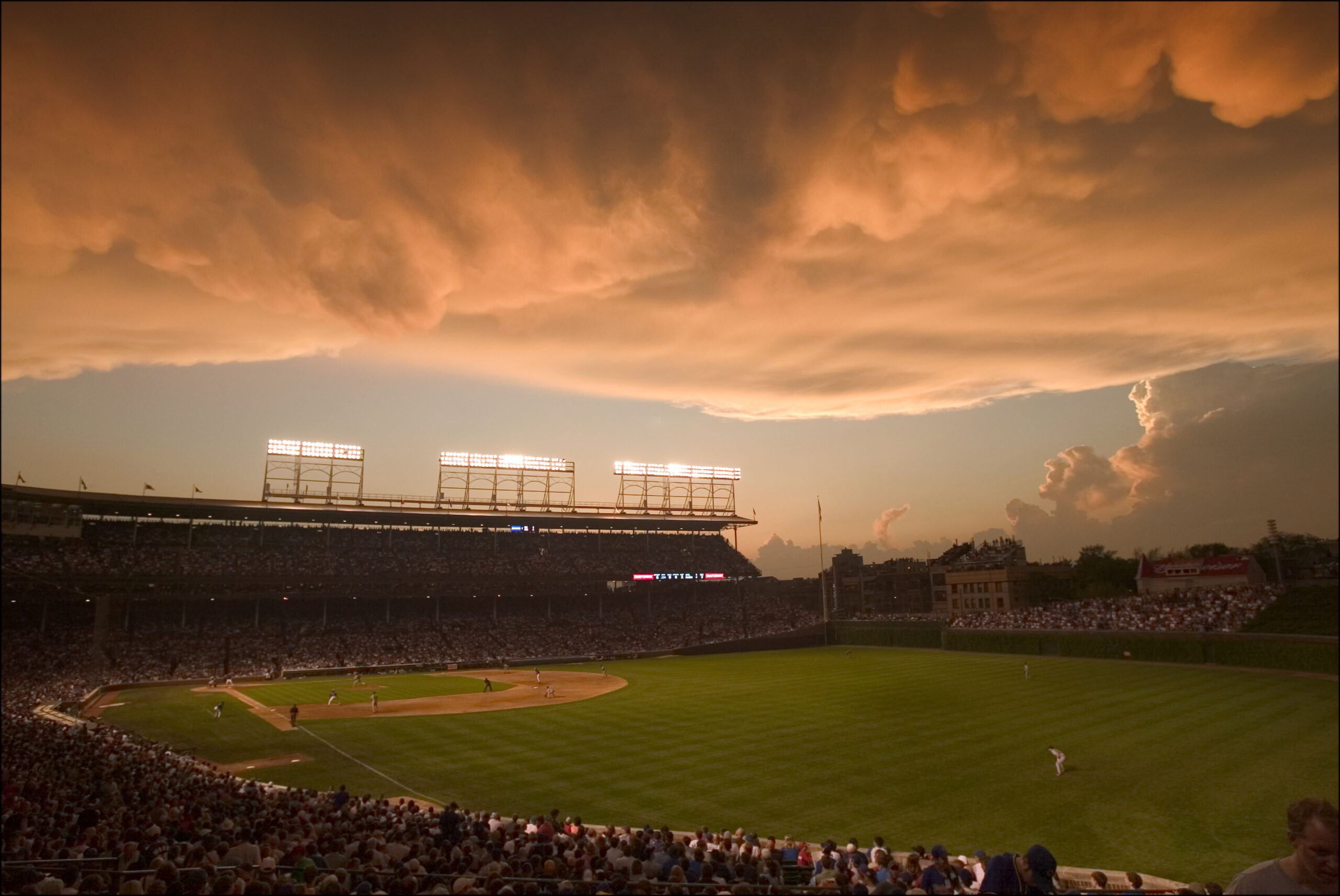
I was in the 3rd base Cubs dugout covering the game and looked up to see clouds forming over the ballpark as the sun was starting to set. Each moment things were changing and transitioning, and I knew something special was coming. I hustled up from the dugout to the rightfield grandstand to make sure I had an angle to photograph the clouds, scoreboard, and fans all in one frame. I’m not sure how many fans were aware of the sky at this moment since they were mostly focused on the game. To this day I still get people asking me how I knew where to go and get here so quickly.
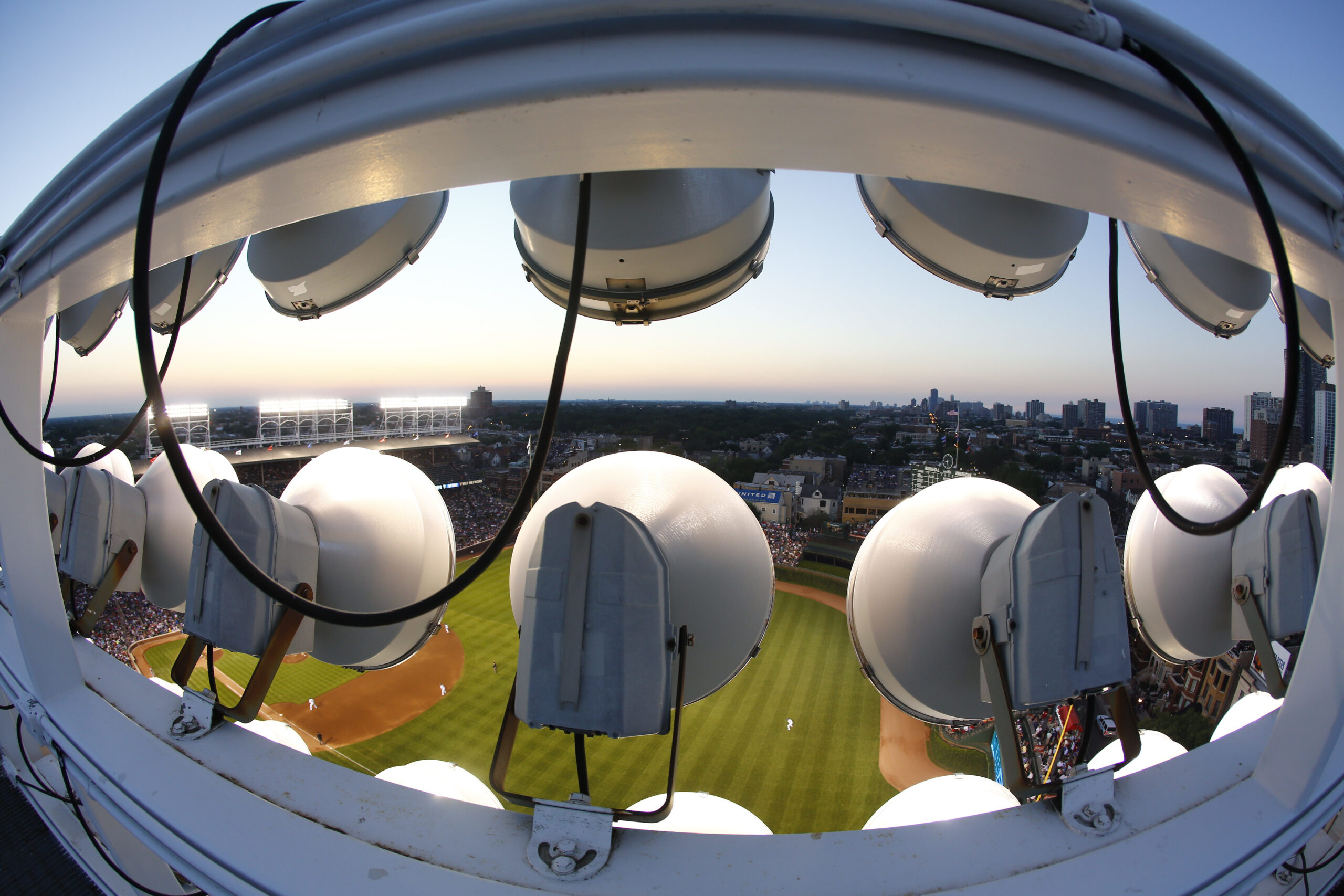
Mike Dour was the electrician at Wrigley and in charge of making sure the lights worked at Wrigley. Not a task to take lightly and not an easy place to get to. To access them you had to climb up onto the roof through a trap door, then walk along a narrow walkway on the peak of the roof and climb up a narrow tube and ladder to get to the platform structure that was the lights tower. All while carrying camera gear around my neck. He put a lot of trust in me not to make any mistakes or create any issues while I was up there. Especially during a game. To me it was just fascinating to be up there during a game at dusk looking down onto the field, game, and crowd while day turned into night. Knowing just how special it was to have that privilege and trust.
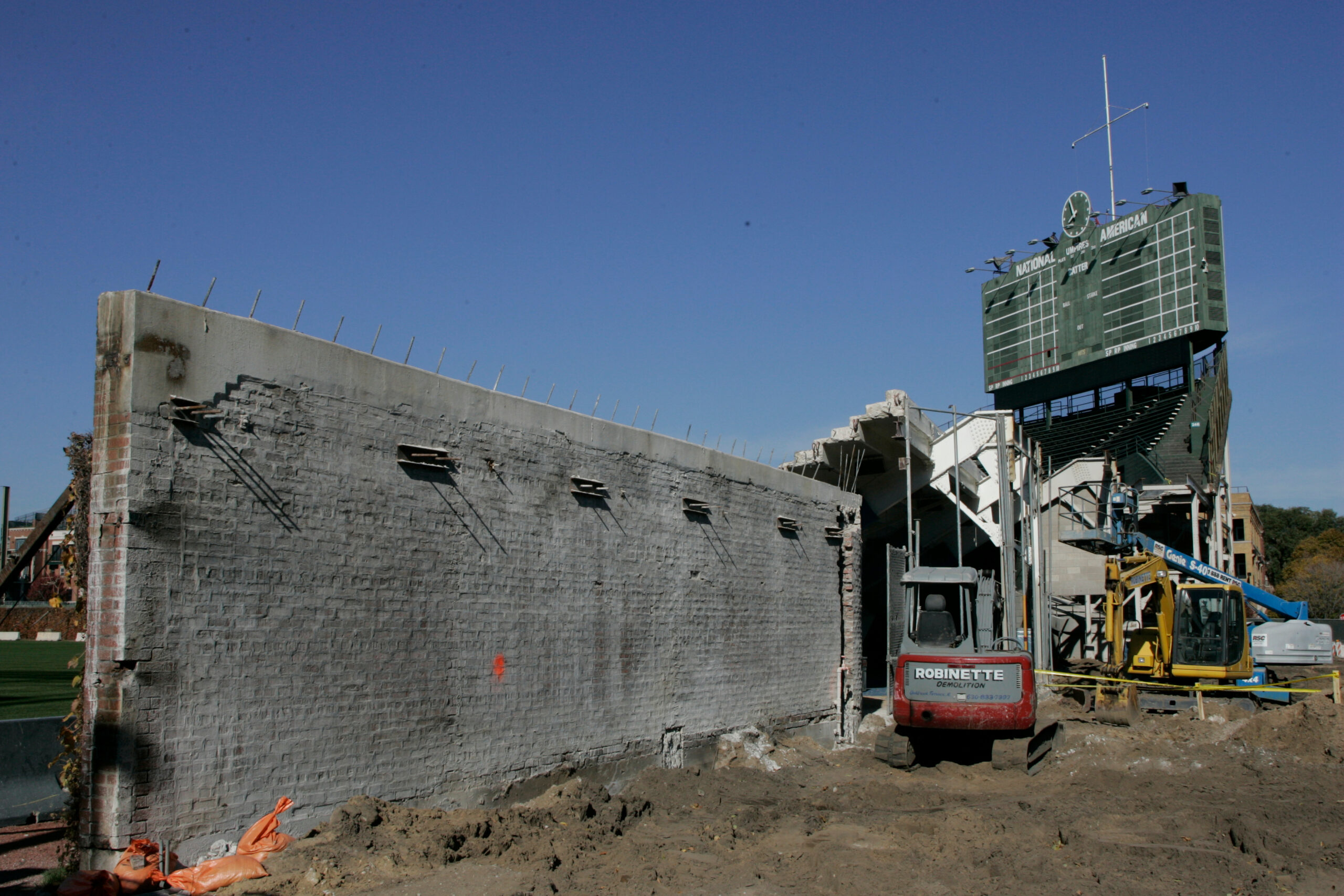
During the 1060 Project. I was charged to spend several days a month during the 1060 project documenting the restoration of Wrigley field. Photographing everything form the tear down of the bleachers, building of the new clubhouse, creation of Gallagher Way, building of the new offices and creation of new It was fascinating to see and live through bring the ballpark into a new era.
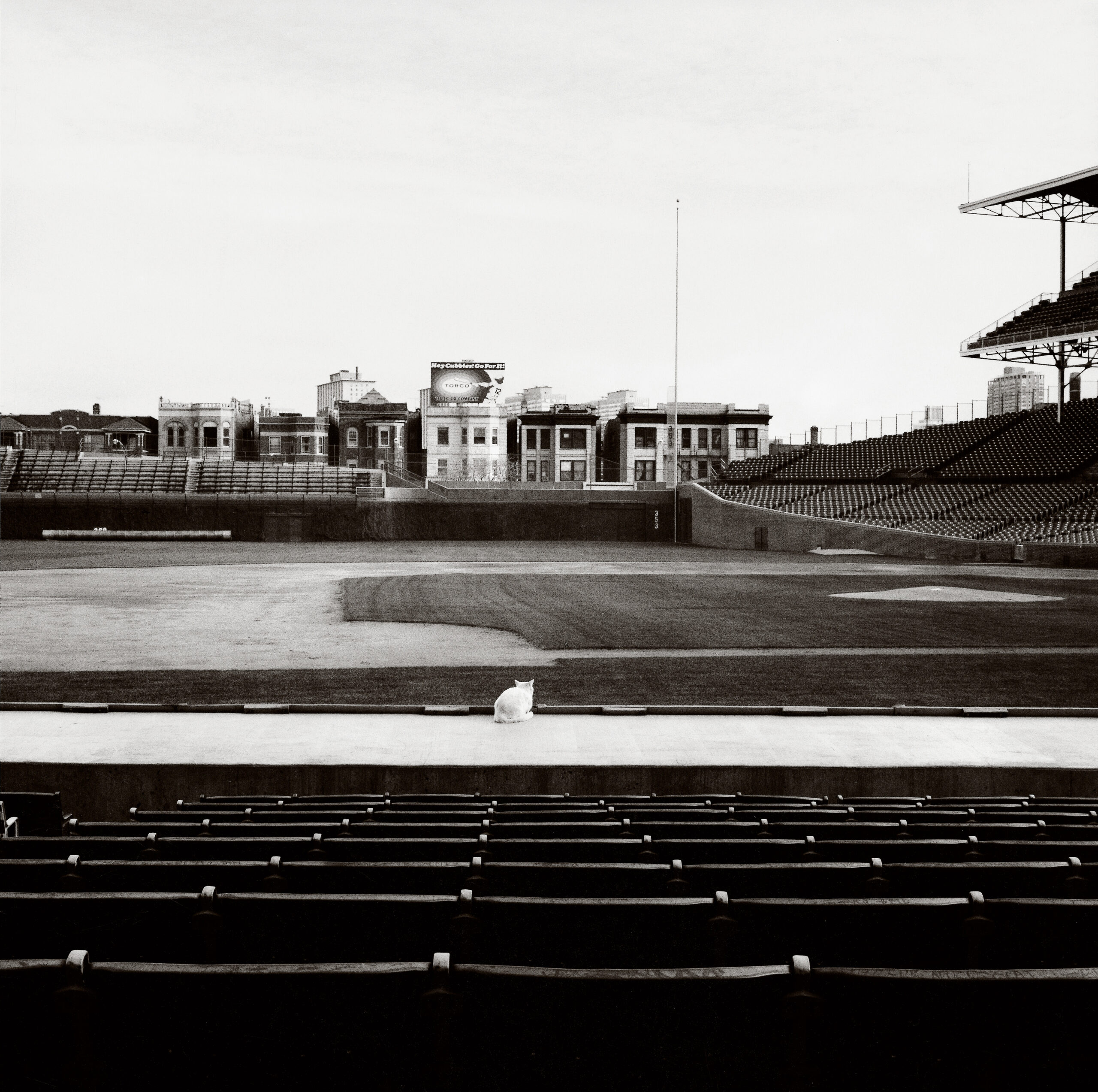
Ironically one of my favorite photos from my time at Wrigley during my time I was there on a grant from the Illinois Arts Council. The Wrigley company and the Cubs had given me access to wander around the ballpark on non-game days to just document the stadium as a very special place. I wandered in a saw this white cat just sitting in top of the dugout. Just me, the cat, and an empty Wrigley. All I could do was smile and marvel at how fortunate I was to be there at that moment.
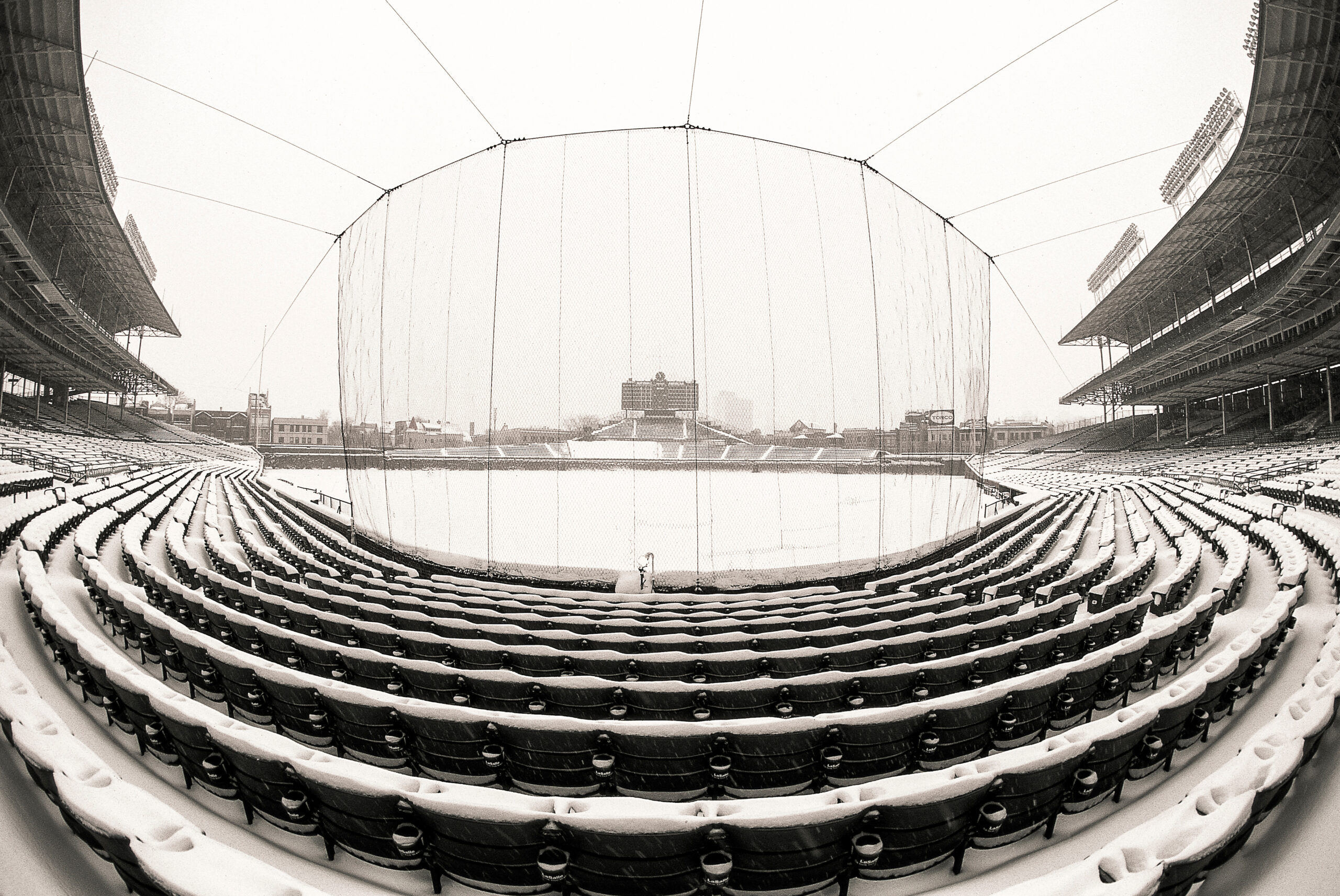
During the winter after snowfalls, I would drive over to the ballpark to shoot photos of the stadium covered in fresh snow before anyone had a chance to trapse across the field. It was always so very peaceful, quiet, still, and beautiful. A long way from mid-season where the stadium would be full of fans cheering, in T-shirts and shorts, vendors yelling, fans wandering around and the ivy walls in full bloom and the game going on as it had been for many years.
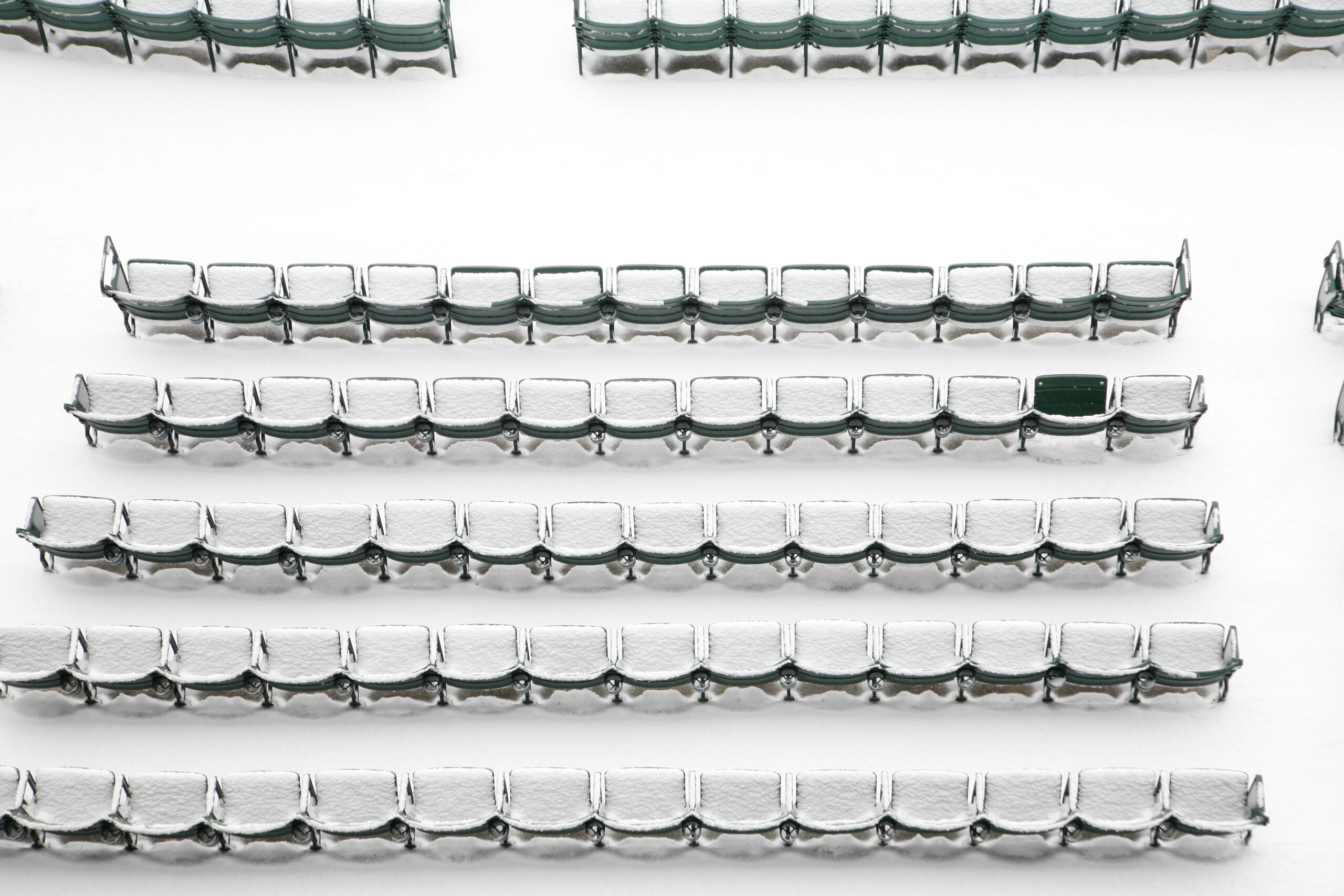
Another winter photograph
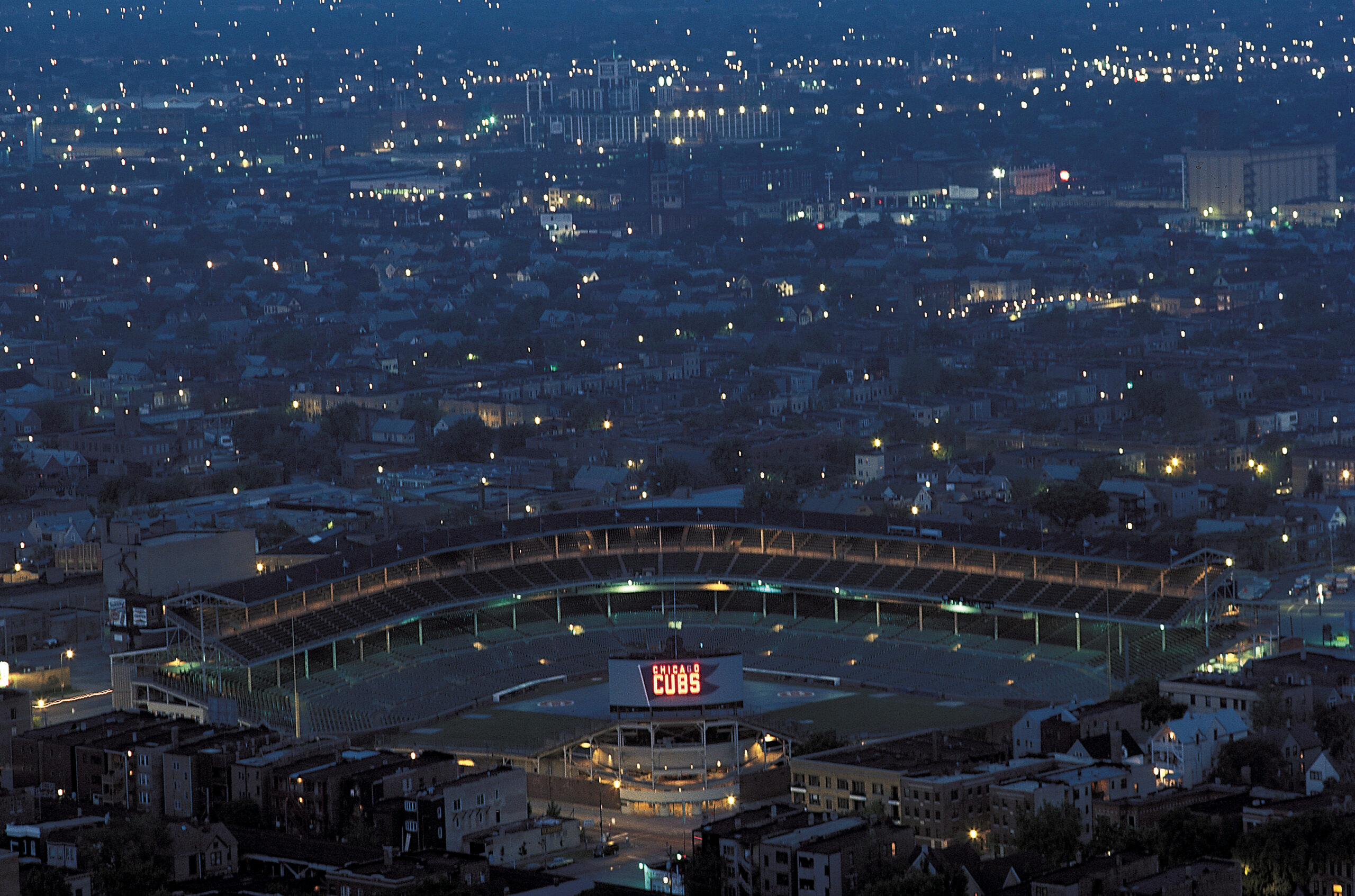
I Spent the entire day from sunrise to sunset up on the rooftop of the building behind the scoreboard that sticks on Irving Park to document the stadium from empty at sunrise, full during the game and then empty again at sunset. I listened on a transistor radio to listen to music and the broadcast and brough up a cooler of ice water and snacks.

Every few years the Cubs would get access to the blimp that was doing live TV shots during the game. It was usually a long slow bumpy trip into the winds coming off the lake. Fascinating views of the city and lake on the way in. Not as controlled or quick as a helicopter but more magical as we floated across the skyline and watched as day turned into night. I was there to take photos of the stadium as part of the city and show how it was nestled in a neighborhood. After sunset and the 3rd trip around the stadium there was really nothing more to photograph but we had to wait until the game was over so the broadcast team could get their final images of the stadium at the end of the game. The whole crew prayed for 8 ½ innings. The flight back was much faster since we were usually going with the wind back to the airfield. Also, the only bathroom was a jug in the back of the blimp. Just in case you were wondering as everyone does.
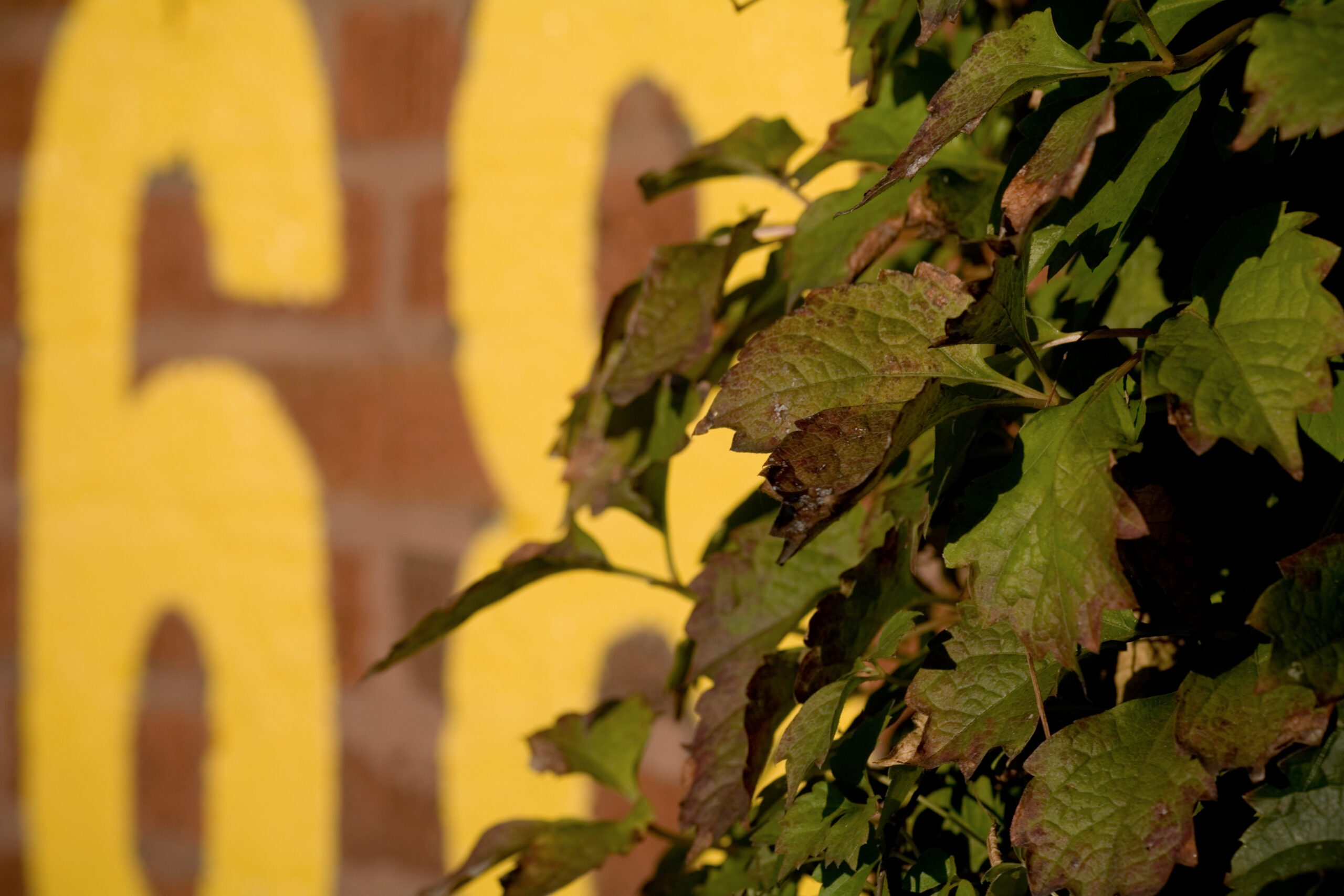
If you ask people to say one thing about Wrigley it is almost always the ivy on the outfield walls or the scoreboard that they mention. When I 1st had access to wander around the field I would go out and just look at it and think of all the players from the lates 30’s until today who had crashed into it making catches. All the all All Stars, Hall of Famers and journey men who played out there in front of it. The pitchers doing wind springs to warm up, players catching fly’ balls during bp and bumping into it. I was mesmerized by all the history and stories it held. Echoes of Bill Veeck. It was just mesmerizing to me and became a long-term focus of mine over the years.
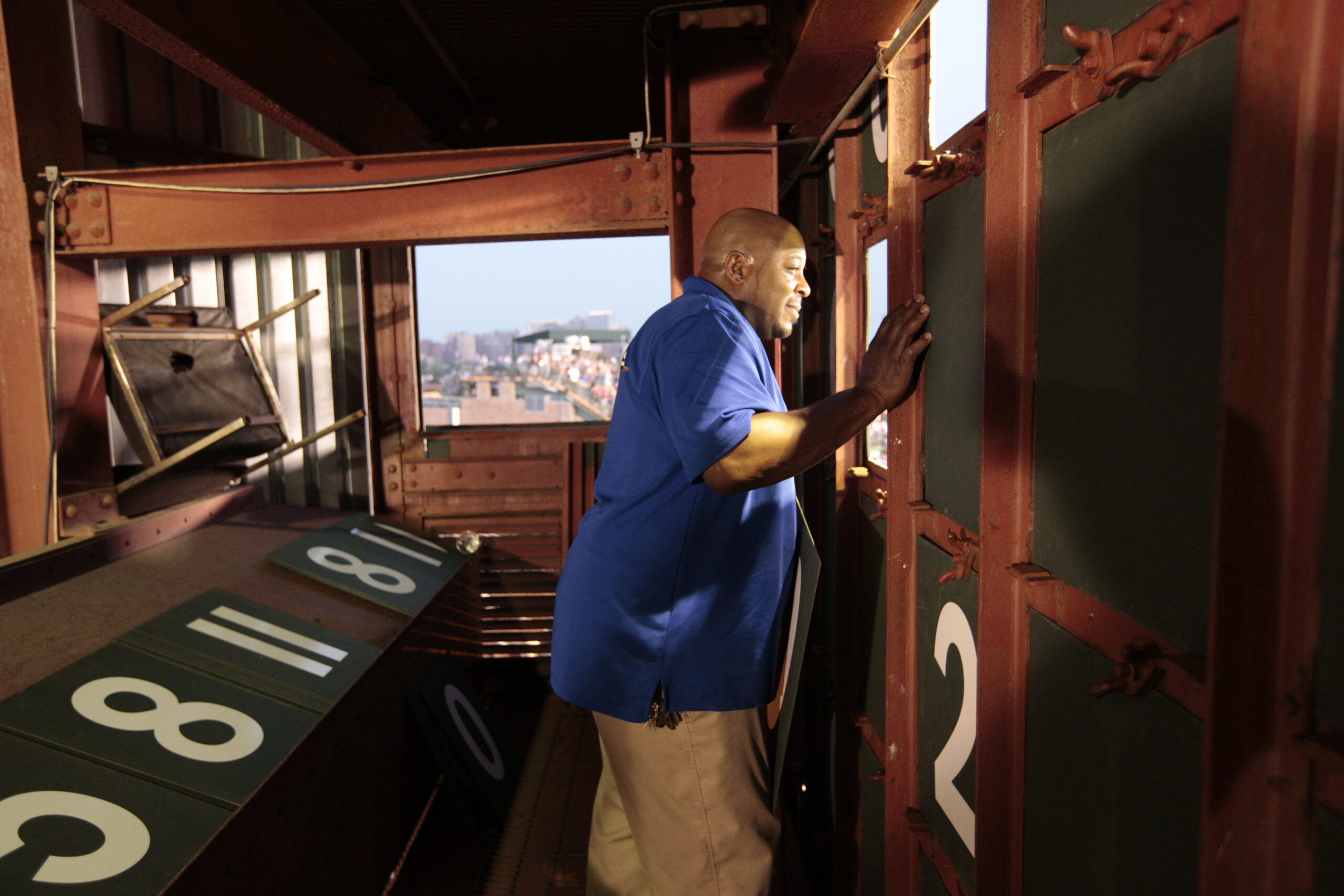
The scoreboard was always a mysterious place to me and some place I always wondered about when I went to games as a kid. Who was up there, how did it work, how did they know when to change the numbers, who was up there, how did they know how to change the balls and strikes so fast, who changes the flags and puts the “W” and “L” flags up. Once I got access to the stadium it became one of the go to places for me on both game days and non-game days. Shooting overalls and long lens action shots peeking out from behind one of the numbers plates that was removed for me to shoot through. It was one of the greatest perks to working there.
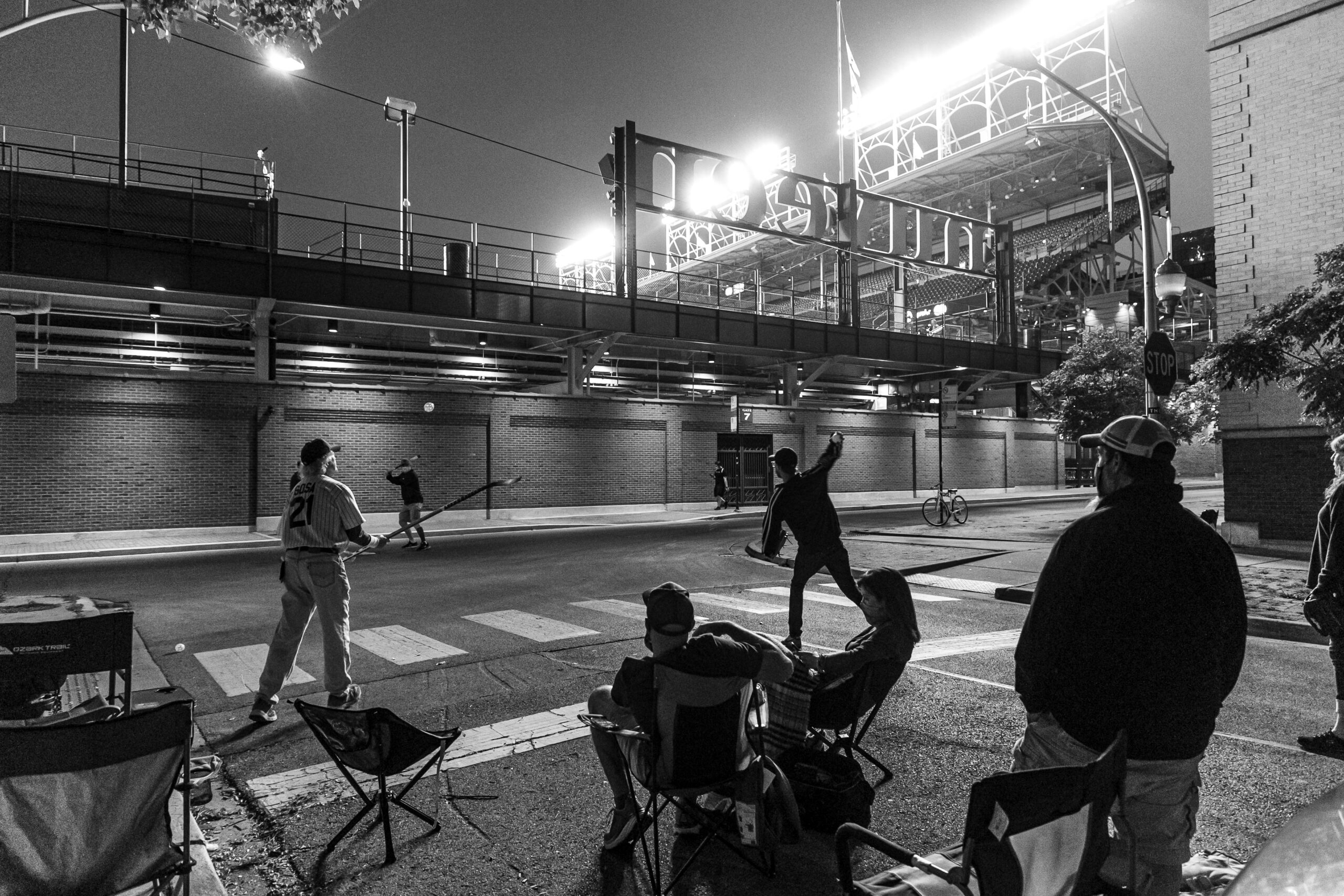
Outside on game days. Since I was not responsible for covering the action of every inning of every game, I was able to wander around the neighborhood and photograph what it was like on the other side of the wall during the on-game days. The two were so much a part of each other that it really was a neighborhood of baseball. I got to know the ball hawks, the street vendors, the fans on the rooftops, people just wandering around and listening to the game on radios and later their cell phones. There was a real commonality of shared love for the game and the place. People hustling to make a buck, kids playing, people returning from work at the end of day games or start of night games. The ballpark and the neighborhood are joined together.
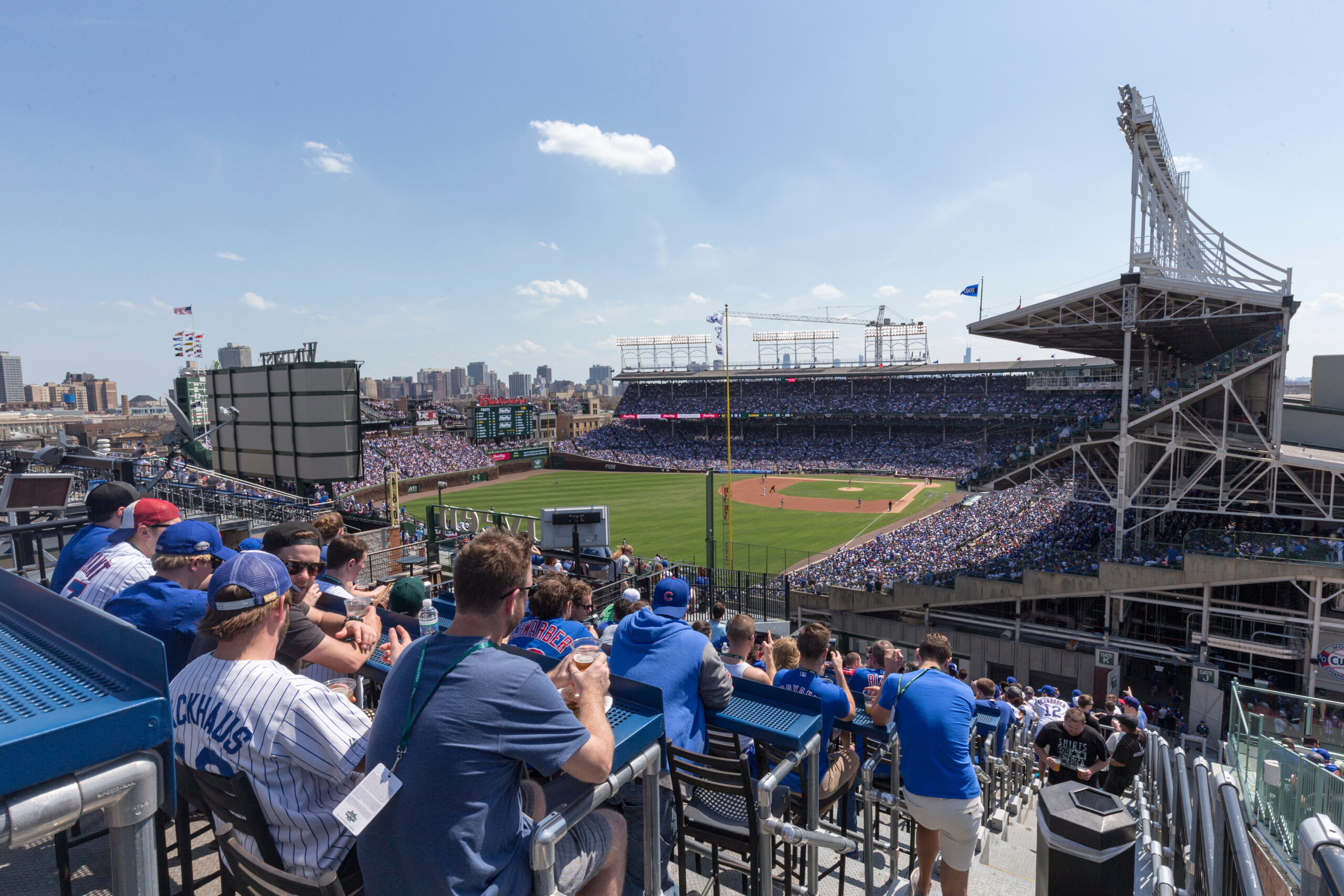
The rooftops across from the ballpark were for the current tenants only and a few guests. A couple of the rooftops had lawn chairs, coolers and hibachis set up. It was day baseball only and on weekdays only a few people would be up there watching the game. They followed the game, kept score, listened to the radio, grilled burgers, and hot dogs, and drank beers. It was a great atmosphere! I got to be friendly with a few of the building owners and had friends who lived in the building on Waveland and Kenmore. I was able to call them and go up most any day to take photos, hang out and document the scene as a member of the group. By the time I retired in 2022 they had tonally transformed into and entirely different scene. Still a very great place to watch a game from in the 2020’s but an entirely different scene. Much like the way baseball and stadiums have transformed over the years. A great scene but an entirely different world. I’m just glad it’s still going on and I was able to be there for both worlds.
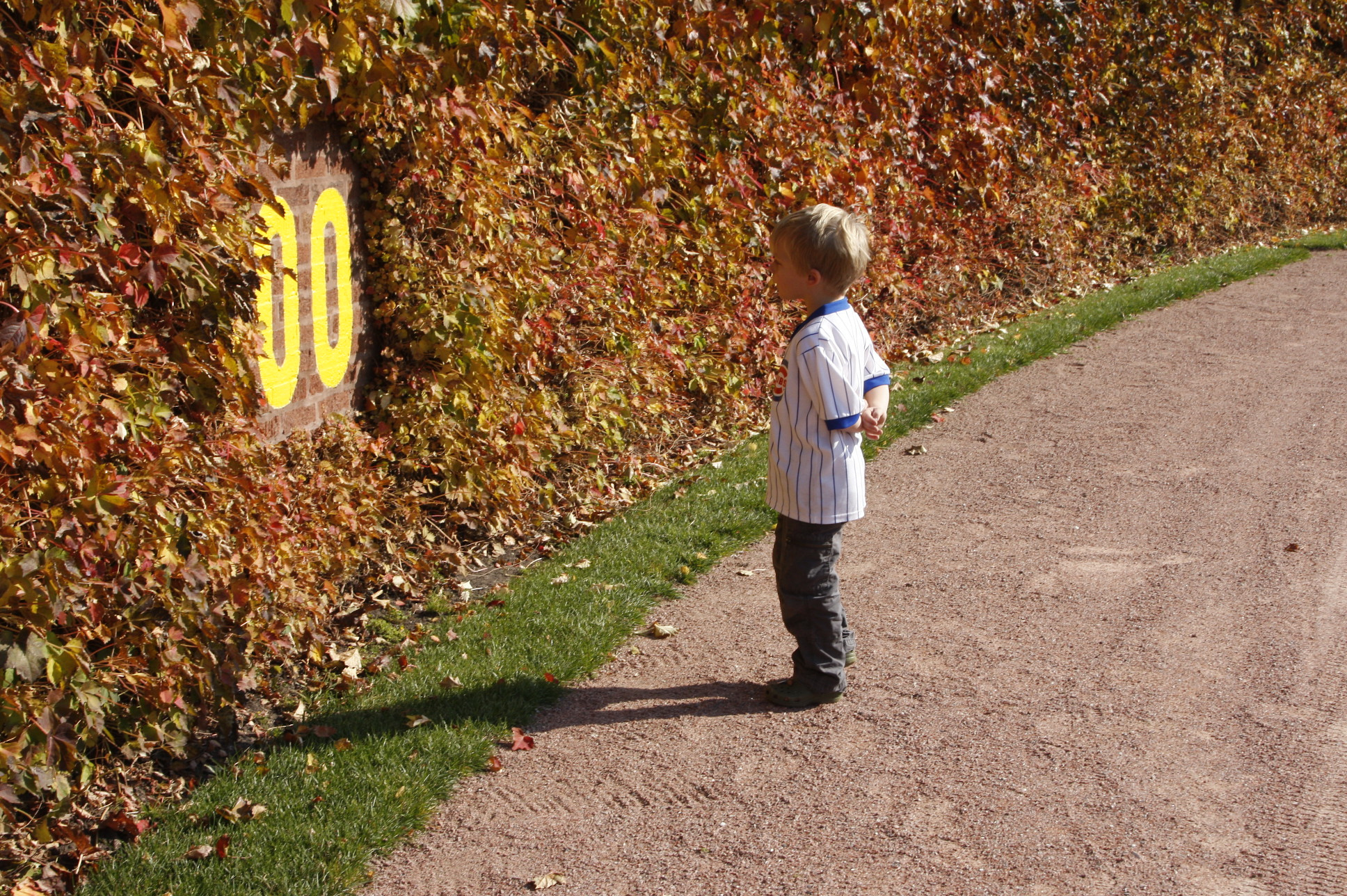
On those sunny warm fall days in Chicago when the leaves are changing and the days getting shorter, I would often go over to Wrigley to photograph the Ivy changing as part of an ongoing documentary of Wrigley. The leaves changed so quickly and there were only very a few days where it all came together. On this day I went over there with my son, Aidan, to experience it all with me. He just got lost in looking into the 400 sign and changing ivy. I was so touched that he was captivated by it. He had no idea who Bill Veeck was, the players who had been there, the significance of the ivy walls or just how special it was to have this access, He just was fascinated by the changing ivy, the bricks and 400 sign.
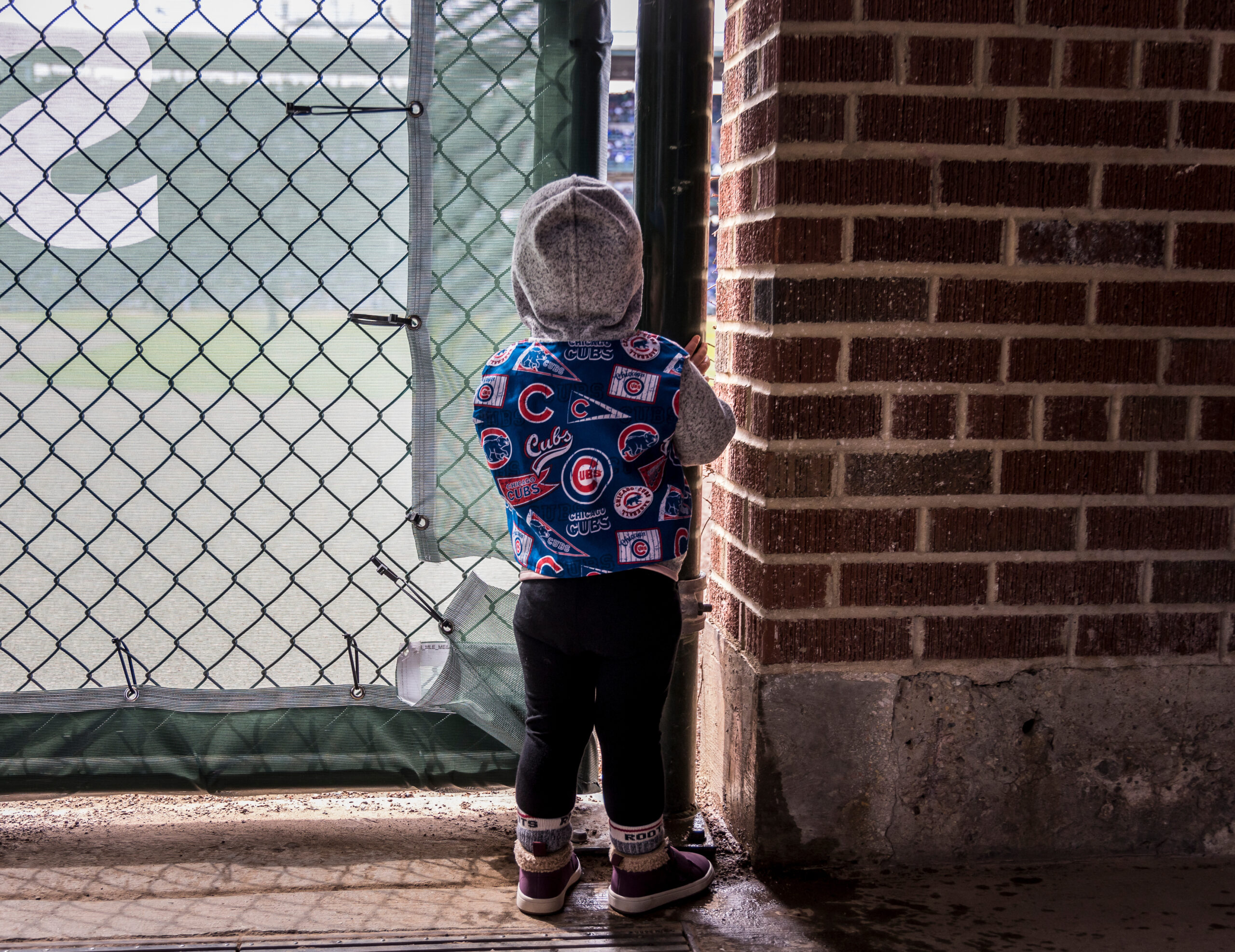
I liked to wander around the ballpark some days during the middle innings just to experience and document the ballpark as a fan. It kept me in touch with the magic that Wrigley is and the continuum of kids coming at early ages with their parents and then coming back years later with their kids experience it all again. The right field gate under the bleachers is one of those unique places that gives you a very intimate and unique view to the game. You are right there at the warning track. You can see and hear the right fielder yelling things out, watch them track down a lazy fly or pick up a ball and make a paly at second or if you were Andre Dawson throw someone out at third. Being there looking out you know that Roberto Clemente, Hank Aaron, Vladimir Guerrero, Mel Ott, and many others had played there. Like so much of Wrigley you can feel the history, it’s a tangible tradition and magic that is shared by generations of fans.